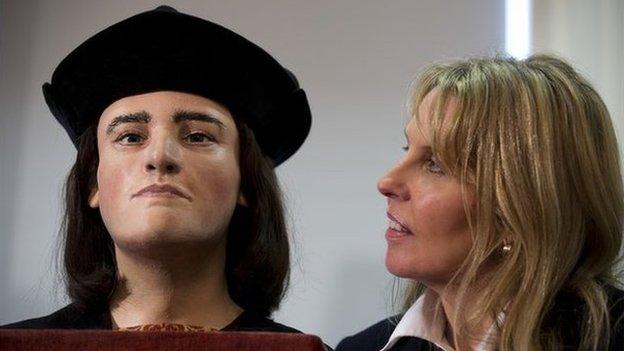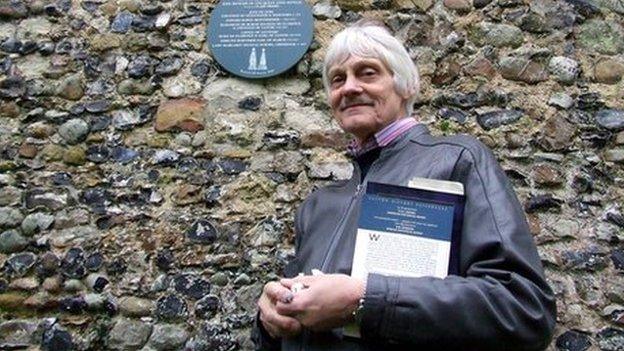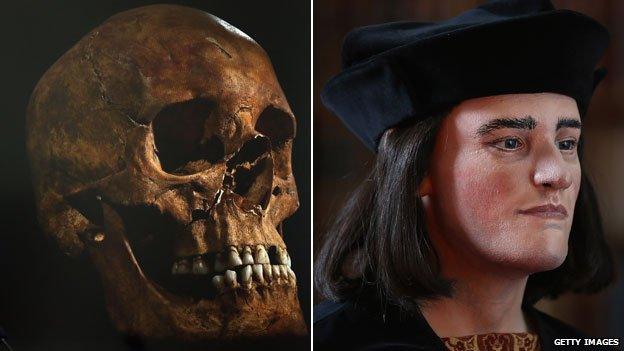Richard III historians Philippa Langley and John Ashdown-Hill made MBEs
- Published

Philippa Langley said the discovery of Richard III had ignited worldwide interest in his story
Two historians who were instrumental in the discovery of Richard III's remains have both become MBEs as part of the Queen's Birthday Honours.
Research by Philippa Langley and John Ashdown-Hill led to the monarch's skeleton being discovered beneath a car park in Leicester in 2012.
In March, the last Plantagenet king was re-buried at Leicester Cathedral.
Mrs Langley said she felt "honoured" while Mr Ashdown-Hill said he was "amazed".
The pair contributed research and funding to the Looking For Richard Project, which resulted in his remains being exhumed in 2012.
Mrs Langley said: "It was an epic battle to get the tarmac cut in Leicester.

John Ashdown-Hill said he was amazed when he received the letter about his MBE
"Everybody thought the king's remains had been thrown in the river, or the church was under buildings and a road.
"The Looking For Richard Project succeeded against all the odds and informed history."
Richard's remains were identified when DNA from his body matched those of distant living relatives.
Mr Ashdown-Hill said: "The project fascinated me enormously, but it was a very stressful time.
"I was amazed when I got the letter from the Cabinet Office.
"I was particularly impressed by the wording of the citation, because it specifically focused on the finding and identification of Richard III, which I'm very happy about."
Leicester City Council said the discovery of the king had generated about £60m for the local economy.

Richard III, whose remains were found in a car park, was reinterred at Leicester Cathedral
- Published19 May 2015
